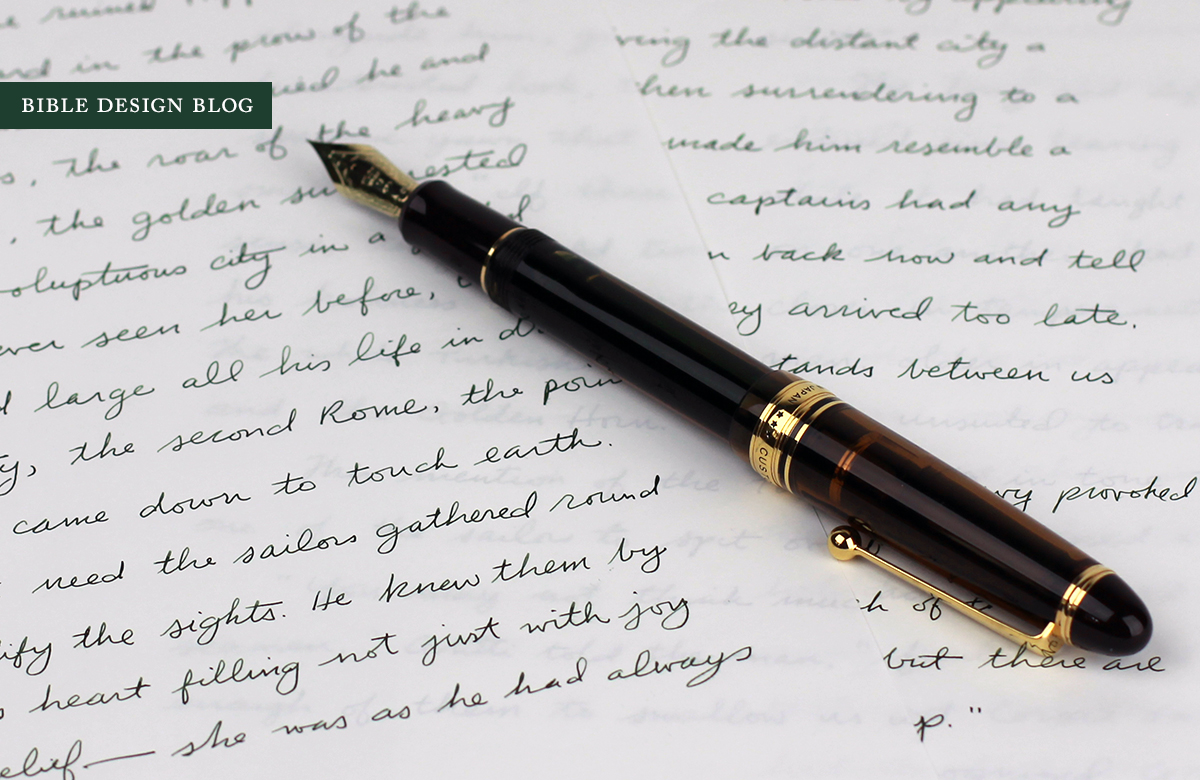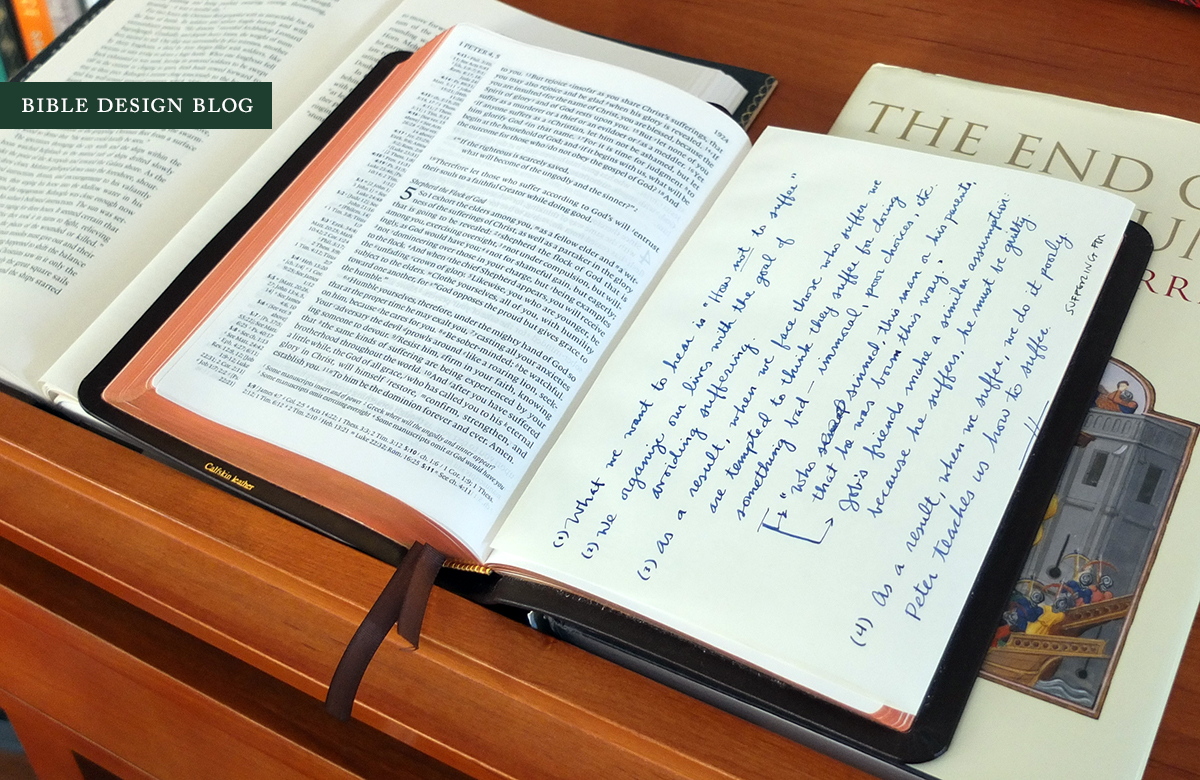Thin Paper for Notes and Outlines
Yesterday on my other blog, I mentioned some of the advantages of Writing by Hand. By nature I'm a complicator. I never do things one way when I can do them five different ways, which is why I don't have a single favorite Bible to recommend, or a single piece of software, or a pen, paper, whatever. My workflow these days reflects this complicating urge: sometimes I write notes down, sometimes I type them on the laptop, sometimes I thumb them slowly into the Evernote app on my phone. Since most ideas will be re-worked and re-written, it doesn't matter how they're captured. Increasingly I find myself relying on paper, especially now that I can snap a photo of the paper notes and make them searchable in Evernote -- best of both worlds.

When teaching or preaching, which I'm occasionally called upon to do, I've started to rely on handwritten notes and outlines more than ever. A few years ago I wouldn't have dreamed of this. Everything had to be typed and laser-printed before I was happy -- or if I was lecturing, I created elaborate multimedia slideshows (which I still do for the right context). Something about the immediacy of pen and paper appeals to me, however. The problem is, I don't like jamming paper into my Bible.
At the risk of sharing too much information, the other thing you need to know about me is that I don't like bulk and clutter. I don't want to carry around a bunch of extra ballast when I'm in front of people. If I bring a bunch of books, papers, etc., to the lectern, I end up ignoring them. So when I started using handwritten notes, I took advantage of thin Tomoe River paper, which allows me to interleave pages into my Bible without adding much bulk.
I've mentioned Tomoe River before on Bible Design Blog. It's a thin Japanese paper that fountain pen users adore for its ink-handling properties. While it isn't as thin as most Bible paper, Tomoe River is close enough to be discreet. I can tuck a page or two of notes into the Bible near whatever passage I intend to discuss, and it disappears until needed. In the photos you see my notes from last Sunday written on a folded A5 sheet, which fits nicely in the Cambridge Clarion ESV (although in the pulpit I was using the larger Legacy I wrote about yesterday).
If the idea of handwritten notes appears to you, and you're as bulk-conscious as I am, you can find out more about my method and sources by following the link: "Writing by Hand."
J. Mark Bertrand is a novelist and pastor whose writing on Bible design has helped spark a publishing revolution. Mark is the author of Rethinking Worldview: Learning to Think, Live, and Speak in This World (Crossway, 2007), as well as the novels Back on Murder, Pattern of Wounds, and Nothing to Hide—described as a “series worth getting attached to” (Christianity Today) by “a major crime fiction talent” (Weekly Standard) in the vein of Michael Connelly, Ian Rankin, and Henning Mankell.
Mark has a BA in English Literature from Union University, an MFA in Creative Writing from the University of Houston, and an M.Div. from Heidelberg Theological Seminary. Through his influential Bible Design Blog, Mark has championed a new generation of readable Bibles. He is a founding member of the steering committee of the Society of Bible Craftsmanship, and chairs the Society’s Award Committee. His work was featured in the November 2021 issue of FaithLife’s Bible Study Magazine.
Mark also serves on the board of Worldview Academy, where he has been a member of the faculty of theology since 2003. Since 2017, he has been an ordained teaching elder in the Presbyterian Church in America. He and his wife Laurie life in Sioux Falls, South Dakota.


